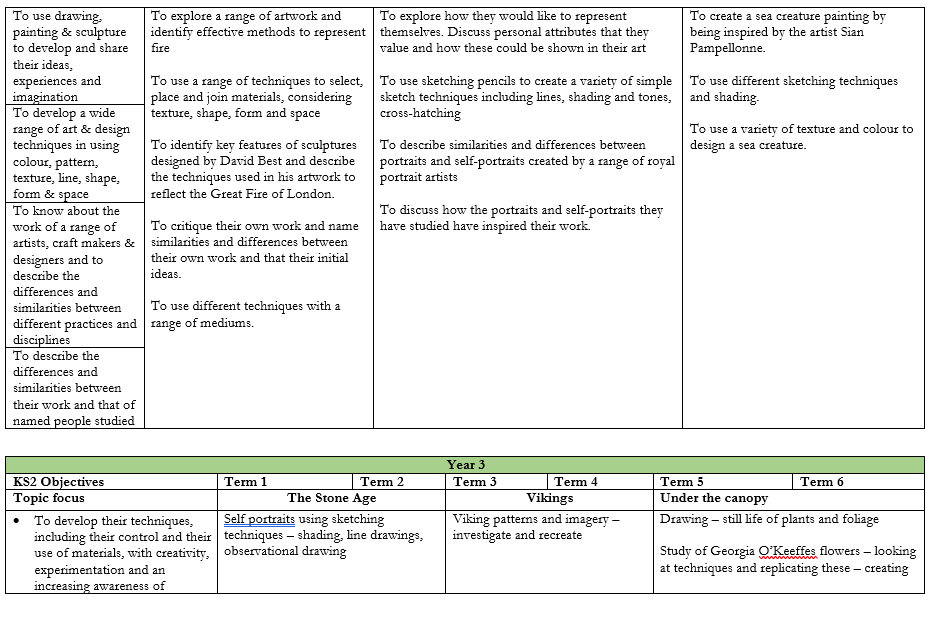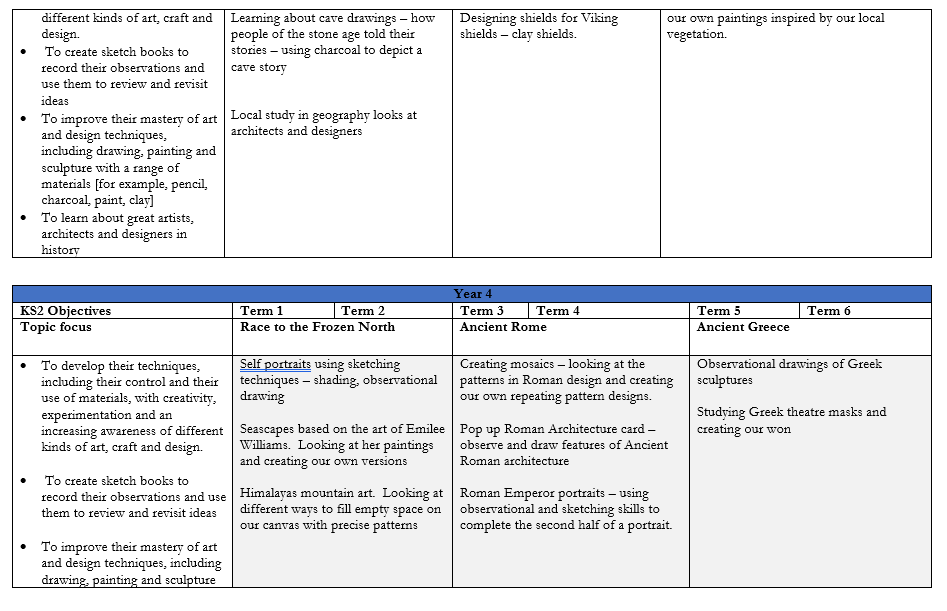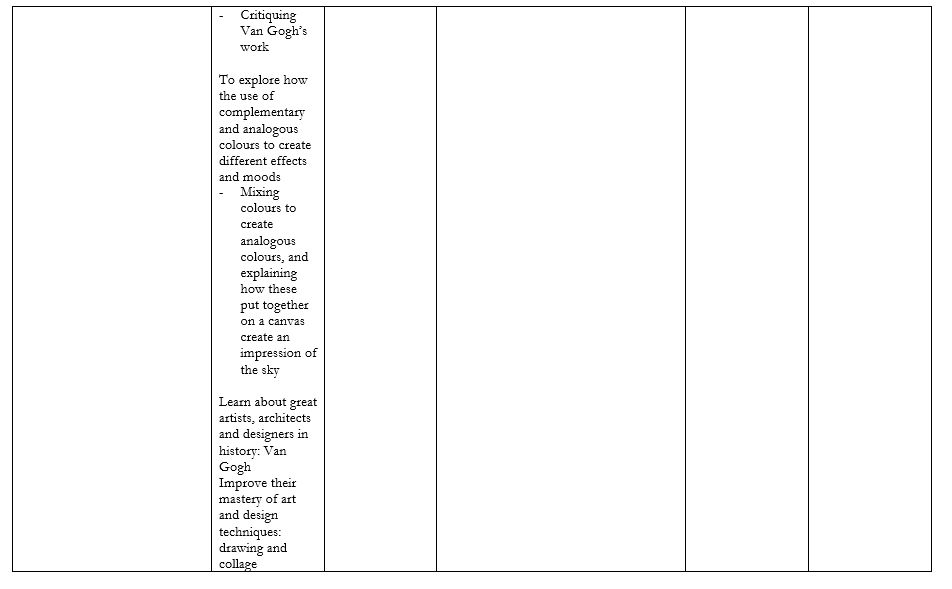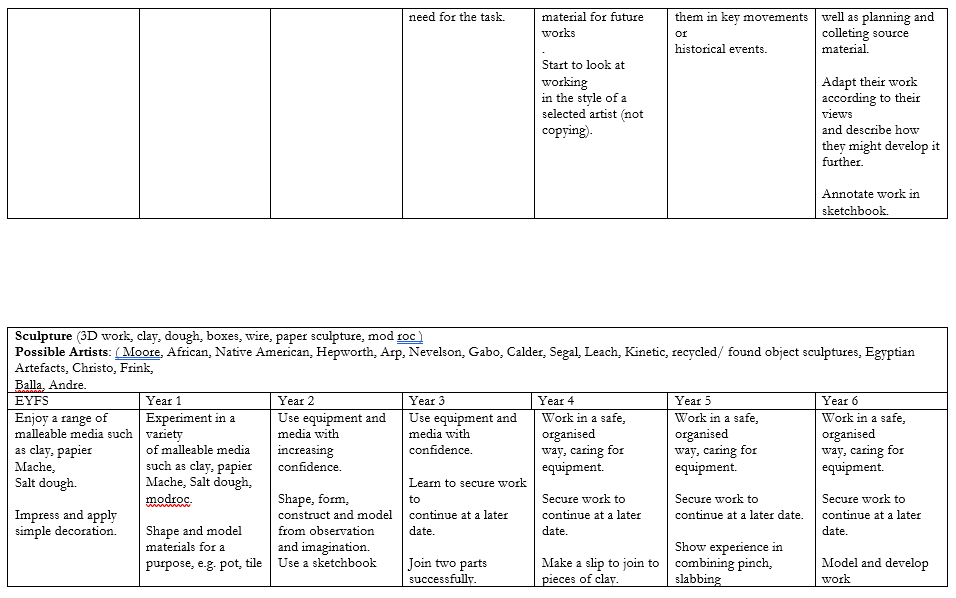Art Week | Jennett's Park
Intent
At Jennett’s Park we believe that high-quality Art lessons will inspire children to think innovatively and develop creative procedural understanding. Our Art curriculum provides children with opportunities to develop their skills using a range of media and materials. Children learn the skills of drawing, painting, printing, collage, textiles, 3D work and digital art and are given the opportunity to explore and evaluate different creative ideas. Children will be introduced to a range of works and develop knowledge of the styles and vocabulary used by famous artists. The skills they acquire are applied to their cross-curricular topics, allowing children to use their art skills to reflect on and explore topics in greater depth; for example, by sketching historical artefacts in detail, researching geographical locations to support their work on landscape painting or using art as a medium to express emotion and thought to enhance their personal, social and emotional development. Many areas of art link with mathematical ideas of shape and space; for example, when printing repeating patterns and designs and thinking about 3D shapes to support structures. It is paramount that art work be purposeful; be this as a means of expression or to explore the styles of other artists that inspire our own work. Pupils should be clear what the intended outcomes are and have a means to measure their own work against this. In Art, children are expected to be reflective and evaluate their work, thinking about how they can make changes and keep improving. This should be meaningful and continuous throughout the process, with evidence of age-related verbal and written refection. Children are encouraged to take risks and experiment and then reflect on why some ideas and techniques are successful or not for a particular project.
Aims
At Jennett’s Park we aim for all children to;
- have the opportunity to record from first-hand experience and from imagination.
- develop opportunities to select their own ideas for use in their work.
- develop creativity and imagination through a range of complex activities.
- develop the ability to control materials, tools and techniques;
- increase their critical awareness of the roles and purposes of art and design in different times and cultures.
- develop increasing confidence in the use of visual and tactile elements and materials.
- foster an enjoyment and appreciation of the visual arts and a knowledge of artists, craftspeople and designers
Implementation
The art and design curriculum at Jennett’s Park enables children to express themselves in a creative, imaginative manner and through exploration. We intend to teach the children a skills-based curriculum, with individuality and creativeness flowing through everything they do. Our art curriculum is based upon the Primary National Curriculum in England, which provides a broad framework and outlines the knowledge and skills taught in each Key Stage. Teachers plan lessons for their class using our progression of knowledge and skills plan. Teachers can use this document to plan their art and design lessons suitable to their class’s interests and what they want to learn about. The progression document ensures the curriculum is covered and the skills/knowledge taught is progressive from year group to year group. When teaching art and design, teachers should follow the children’s interests to ensure their learning is engaging, broad and balanced. A variety of teaching approaches are used. At Jennett’s Park, we provide a variety of opportunities for art to take place inside and outside the classroom. These can be individual, class, year or whole school collaborations. These activities should be guided by the children’s interests in particular topics. An arts week across the school will usually be held in the summer term.
Impact
Within art and design, we strive to create a supportive and collaborative ethos for learning by providing investigative and enquiry-based learning opportunities. Emphasis is placed on investigative learning opportunities to help children gain a coherent knowledge of understanding of each unit of work covered throughout the school.
Our art curriculum is high quality, well thought out and is planned to demonstrate progression. We focus on progression of knowledge and skills and discreet vocabulary progression also form part of the units of work. We measure the impact of our curriculum through the following methods:
- Assessing children’s understanding of topic linked vocabulary before and after the unit is taught.
- Summative assessment of pupil discussions about their learning.
- Images and videos of the children’s practical learning.
- Interviewing the pupils about their learning (pupil voice).
- Moderation meetings where pupil’s work is shared and scrutinised and there is the opportunity for a dialogue between teachers to understand their class’s work.
- Annual reporting of standards across the curriculum.




















